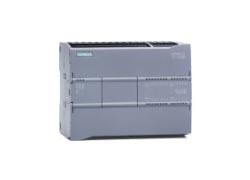
(Modules 5-7) $2485.00
Duration: 3 days
Audience: Anyone needing to maintain or program an S7 system using TIA Step 7
Prerequisites: Attended TIA Portal Step 7 Introduction Modules 1-4 OR acquired the equivalent experience. Please contact us.
Course Outline
Module 5
To begin this module, the student will learn about the PLCSIM software available for the S7-1200 and 1500 platforms followed by an introduction to the demo used in the class. A memory review is covered in detail. The student will be introduced to the Function Block Diagram, Statement List Language and Structured Control Language and learn to interpret them also. Indirect Addressing is discussed next and then the student will learn how to use the concept of indirect addressing with Block Move functions. To conclude the module the various move functions available in TIA portal will be shown.
Lessons
-
- TIA PLCSIM S7-1200/1500
- Introduction to the Demo
- Memory Review
- Introduction to FBD/STL
- Introduction to SCL
- Indirect Addressing
- Variant Move Functions
- Serialize and Scatter
Module 6
This module starts with the benefits of using multi-instance data blocks over large quantities of single instance data blocks. Next, the students will use various clock function to use this information from the PLC. The module concludes with the Get/Put Instructions where the student will learn to configure a network connection and send and receive data to another station.
Lessons
-
- Multi-Instance Data Blocks
- Clock Functions
- Get/Put Instructions
Module 7
This module begins with a discussion on structured text. The student will gain an understanding of ST Flow and recognize concepts of expressions, conditionals and loops. Next, the student will be introduced to Sequential Function Charts and will be taught the fundamentals of programming SFC in Siemens TIA Portal Step 7 using S7-GRAPH. To conclude the module, function blocks used for continuous PID control will be introduced. The student will have a basic understanding of closed loop control and will be familiar with many of the concepts and terms associated with closed loop control.
Lessons
-
- Structured Text
- SFC Fundamentals
- SFC Programming
- PID Control
Course Available
Fill out the form below:














